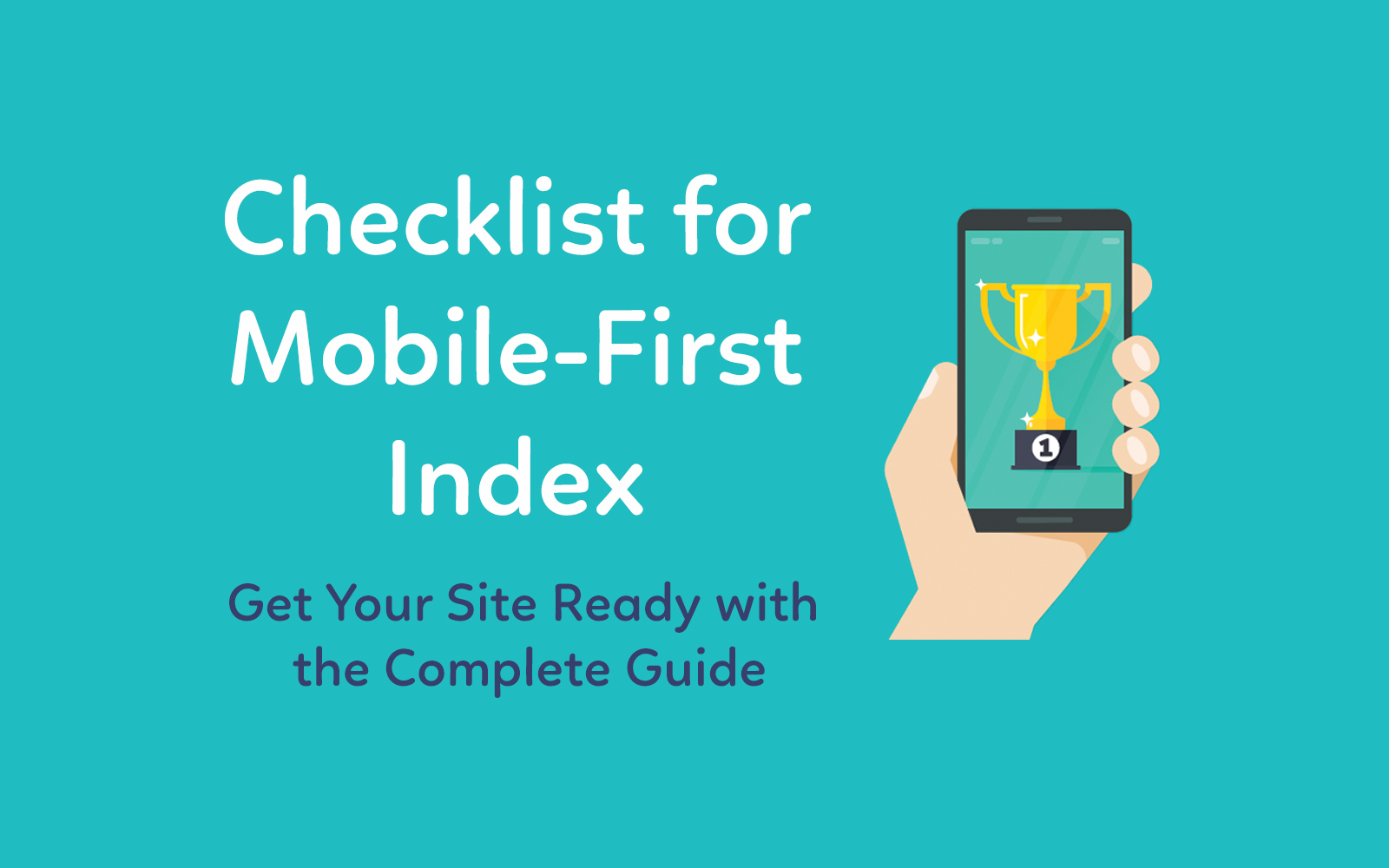Mobile-First Index means that Google will prioritize the mobile version content over the desktop version for indexing and classification purposes. In other words, your search engine rankings will now depend on your mobile version of the site.
Considering the powerful impact that this may have on your SEO performance, we strongly recommend you to start getting ready to face this new Google’s algorithm. We know it’s a lot of pressure, but don’t panic! Let us guide you. 🙂
Here you have a complete checklist to make sure your site is well prepared for the Mobile-First Index.
Checklist to get your site ready for Mobile-First Index
1. Is your site mobile friendly?
To check out whether your site is mobile-friendly or not, you can use tools like the Mobile-Friendly Test or simply get a few mobile devices and test your website by yourself.
- Your mobile site is free of intrusive interstitials. (Popup ads that lead to bad user experience)
- Your videos (if applicable) are mobile-friendly. Check whether your video player is optimized for mobile.
- Javascript & CSS are crawlable by search engine spiders.
- You can easily open any clickable element with your thumb.
Download our FREE Printable Checklist
Checklist for Mobile-First Index
2. Test your site’s mobile configuration.
What kind of website do you have? Responsive design, dynamic serving, or separate mobile site? Depending on your site’s configuration, you’ll need to check the following items.
a. Web responsive design
- Your content adjusts to screen resolution and size. (CSS Media queries / mobile stylesheets is running smoothly)
- Your website’s viewport (which controls the width of a webpage for the device a user is viewing) is configured correctly. – You can use the Mobile-Friendly Test to see if you have a viewport configured. Submit your URL, and if it is not configured, it will tell you.
- There are no mobile usability errors in Google Search Console.
b. Dynamic serving
- Vary-HTTP header is implemented and working correctly. (Mobile-Friendly Test )
- There are no mobile usability errors. ( Mobile-Friendly Test )
c. Separate mobile site
- It is also possible to access the desktop site from the mobile.
- You are indicating the relationship between your desktop and mobile URLs with a <link> tag that includes the elements rel=” canonical” and rel= “alternate.”
- There are no Robots.txt issues, blocking your mobile site. (Google Search Console & FandangoSEO)
- The mobile site has been also added to Google Search Console & FandangoSEO.
- Your mobile site is https by default. (Validate that your canonical, redirect 301, rel alternate are performing correctly)
- There are no 404 errors.
- Same structured data on the mobile site as in the desktop version.
3. Web performance – Check how fast your website loads from mobile.
- The site passes Google’s PageSpeed Insights test.
- Test your site’s load time speed using http://webpagetest.org/
- Images and videos load quickly.
- The site is serving cached pages.
- HTML files are compressed.
- Javascript and CSS are compressed.
- Use a CDN (content delivery network) to accelerate the site’s loading speed. CDN is a group of servers geographically distributed that work together to deliver Internet content as quickly as possible to users.
4. AMP ( Accelerated mobile pages )
- AMP is successfully implemented with no errors.
- There are no tracking issues on the AMP version with Google Analytics.
- Validate that you are using the meta amp-HTML in your desktop version pointing to the AMP page.
5. Content
- The mobile site has the same content as the desktop version. Make sure that each page of your mobile site has the same information as the desktop version.
- Validate that there is no content hidden on the mobile site.
6. Internal linking
- The mobile site has the same internal linking structure as the desktop version. Use FandangoSEO to compare both mobile and desktop sites’ internal linking.
If you have followed these steps, you are ready for Mobile-First Index!
Remember that you can download this list in a PDF version to cross out the revised tasks!
Let us know in the comments below if you have any questions concerning this subject or if we can assist you during the process. We are here to help you. 🙂
Last Updated on February 17, 2021 by Hannah Dango




